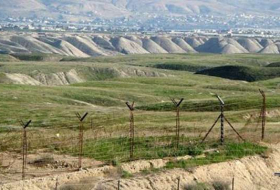The Hwasong-15 missile, which it said was its "most powerful", was launched in darkness early on Wednesday.
It landed in Japanese waters but flew higher than any other missile the North has previously tested.
What exactly is North Korea claiming?
The claims were presented on state television in a special broadcast at midday, as well as in a report released by state news agency KCNA.
Pyongyang says the missile reached an altitude of 4,475km (2,780 miles) and flew 950km in 53 minutes.
The projectile, fired at a steep incline, did not fly over Japan as some have done in the past, and landed about 250km short of its northern coast, according to Japanese officials.
North Korea has previously made claims that its projectiles could hit the US, but this marks the first time it says it can do it with this new type of missile, which appear to be an upgraded version of previous ones.
KCNA added that North Korean leader Kim Jong-un, who personally signed off on the launch, "declared with pride that now we have finally realised the great historic cause of completing the state nuclear force, the cause of building a rocket power".
The report said that "as a responsible nuclear power and a peace-loving state", North Korea would "make every possible effort to serve the noble purpose of defending peace and stability of the world".
It said its weapons, meant as a defence against "the US imperialists' nuclear blackmail policy", would "not pose any threat to any country" as long as North Korean interests were not infringed upon.
"This is our solemn declaration."
Could its missile really reach the US?
An analysis by the US-based Union of Concerned Scientists found that the missile could have travelled more than 13,000km if it was on a standard trajectory, thus reaching "any part of the continental United States".
But it added it seemed likely that the missile had a very light mock warhead - which meant that it could be incapable of carrying a nuclear payload, which is much heavier, for that distance.
North Korea however claims that the Hwasong-15 could reach mainland US carrying a "super-large heavy warhead".
Pyongyang has yet to demonstrate it can successfully mount a miniaturised nuclear warhead on the tip of a missile, and ensure it survives the journey to deliver the payload.
But given the rate of its advancements, some experts do not rule this out as a possibility.
How is the world reacting?
The test has prompted swift international condemnation. The UN Security Council is due to convene an emergency session to discuss it.
The UN's secretary-general Antonio Guterres said the launch violated sanctions and showed "complete disregard for the united view of the international community".
Prior to North Korea's statement, US defence secretary James Mattis said the missile launch "went higher, frankly, than any previous shots they have taken", and said North Korea poses a worldwide threat.
US President Donald Trump was briefed while the missile was still in the air, the White House said. Afterwards he said: "We will take care of it."
Japan and South Korea have condemned the test, with the South launching its own missile test in response.
The launch is just the latest in a series of weapons tests that have raised tensions to unprecedented levels, as North Korea ignores criticism and continues to develop its nuclear and missile programmes.
Pyongyang last launched a ballistic missile in September, the same month it conducted its sixth nuclear test.
More about: #NorthKorea















































